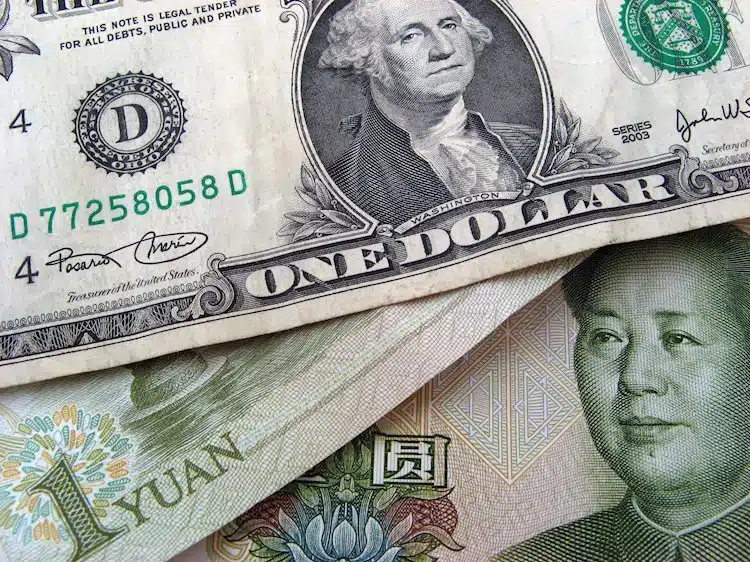On Wednesday, the People’s Bank of China (PBOC) set the yuan’s daily midpoint fix at 6.8951 from the previous fix of 6.9117, which represents a stronger yuan than the prior close of 6.9015. This move may signal that China intends to utilize its currency as a tool in its ongoing trade dispute with the United States.
China has been accused by the United States of manipulating the yuan’s value, but Chinese officials deny these claims, stating that they do not engage in currency manipulation. Despite these denials, the yuan’s movements have been closely watched by traders and market analysts around the world as an indicator of China’s economic health and its potential to impact global markets.
The onshore yuan (CNY) differs from the offshore one (CNH) in terms of trading restrictions, with the latter being less tightly controlled. The PBOC sets the daily midpoint fix each morning, based on the previous day’s closing level and quotations taken from the inter-bank dealer. The daily midpoint fix is a crucial component of China’s financial system and serves as a signal to financial markets regarding the central bank’s stance on the yuan’s value.
China has made it clear that it will not be dragged into a currency war with the United States, but the country is simultaneously trying to minimize the economic impact of the ongoing trade dispute. With the United States threatening to impose additional tariffs on Chinese goods, China may use the yuan as a tool in its efforts to mitigate the effects of these tariffs.
In the past, China has allowed the yuan to weaken to offset the impact of tariffs, which makes Chinese exports more competitive in foreign markets. However, this strategy also carries risks, as a depreciating currency can cause capital outflows and lead to financial instability. This is why the PBOC has been working to promote stability in its currency, both to guard against financial risks and to maintain its global reputation.
China’s currency strategy is complicated by the current international economic environment, which is marked by uncertainty and volatility. The United States and China are engaged in an escalating trade dispute, and tensions between the two nations are high. The trade war is causing disruptions in the global supply chain and is leading to slower international growth, which is bad news for China, which is heavily dependent on exports.
In response to these challenges, China has been working to shift its economic model towards a more consumption-driven growth strategy. One of the key components of this strategy is to promote the internationalization of the yuan, which would reduce China’s dependence on the global financial system and make it less vulnerable to external economic shocks.
Internationalization would also provide China with greater influence over the global financial system, which could help it to achieve its strategic goals. However, this process is likely to be slow and challenging, and will require significant reforms to China’s financial system and regulatory environment.
The current environment is also leading some analysts to speculate that China may choose to devalue its currency in response to the trade dispute. This move would be intended to make Chinese products more attractive to foreign buyers, but it could also have unintended consequences. For example, a sharp devaluation could lead to capital outflows and increase financial risks.
Despite these challenges, China remains a crucial player in the global economy, and its policies and actions have significant implications for businesses around the world. The ongoing trade dispute is creating uncertainty in financial markets, and any moves by China to devalue its currency or alter its trading practices could lead to significant disruptions for global commerce.
As the trade dispute between the United States and China continues to evolve, it is likely that the yuan’s movements will remain closely scrutinized, and that China’s currency policy will continue to play a critical role in global economic dynamics. At the same time, China must balance its efforts to promote stability and growth in its economy with the need to protect against external threats, including those posed by trade tensions and financial risks.


